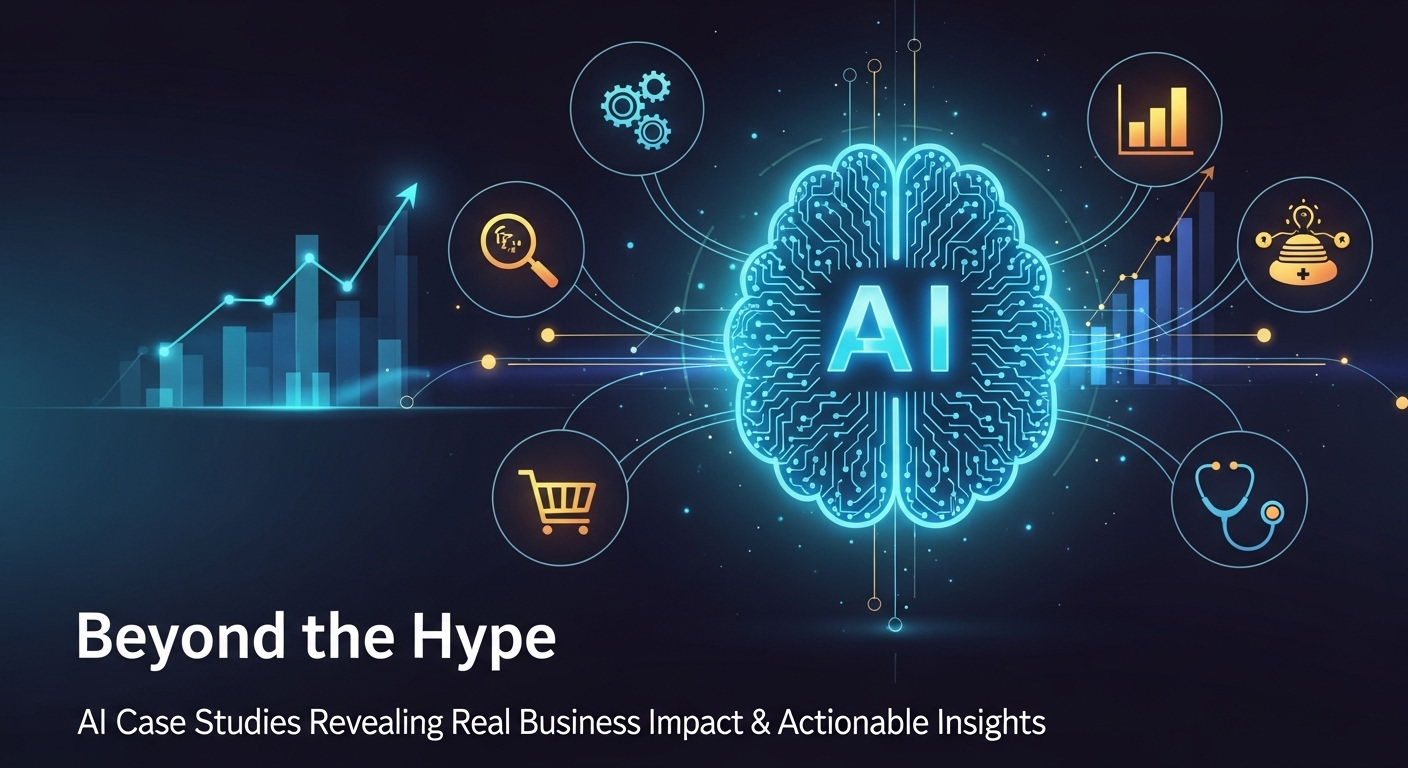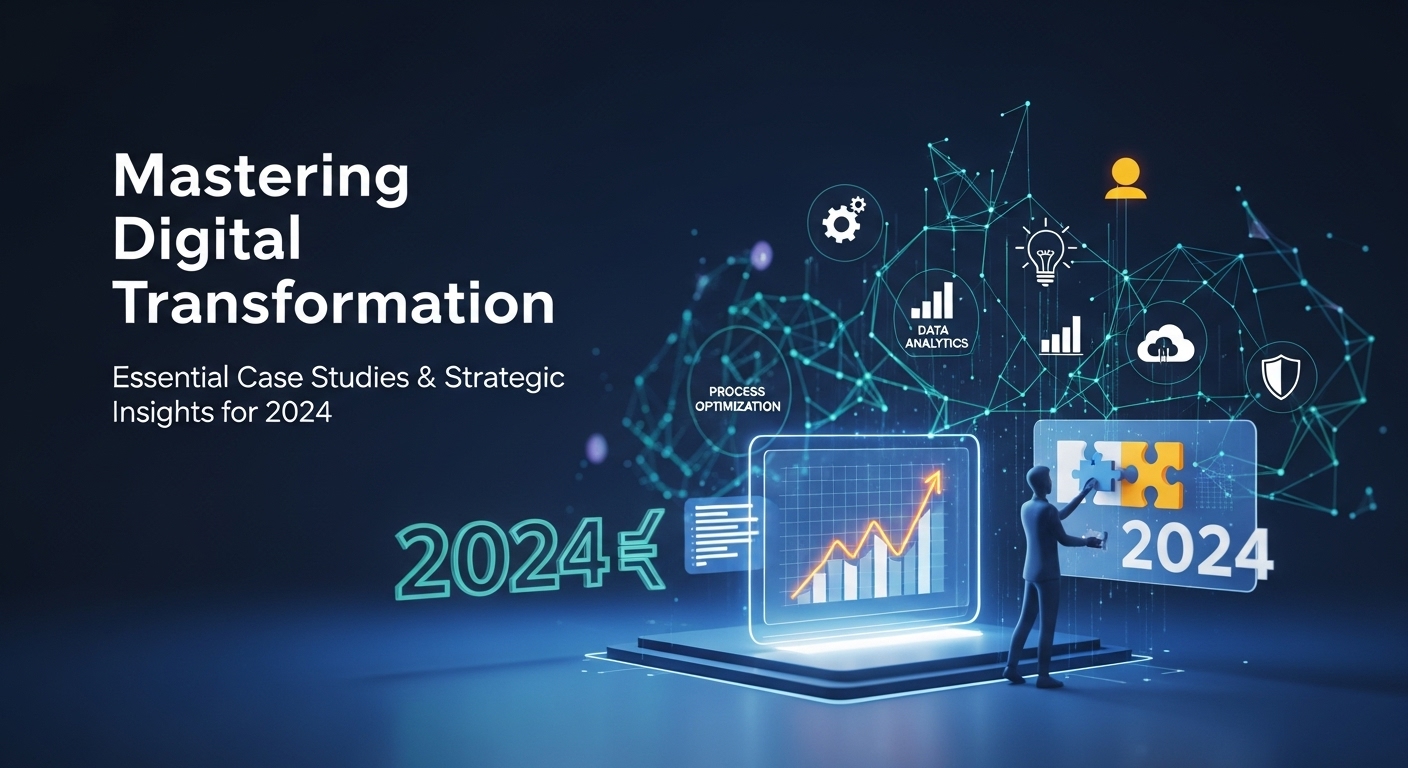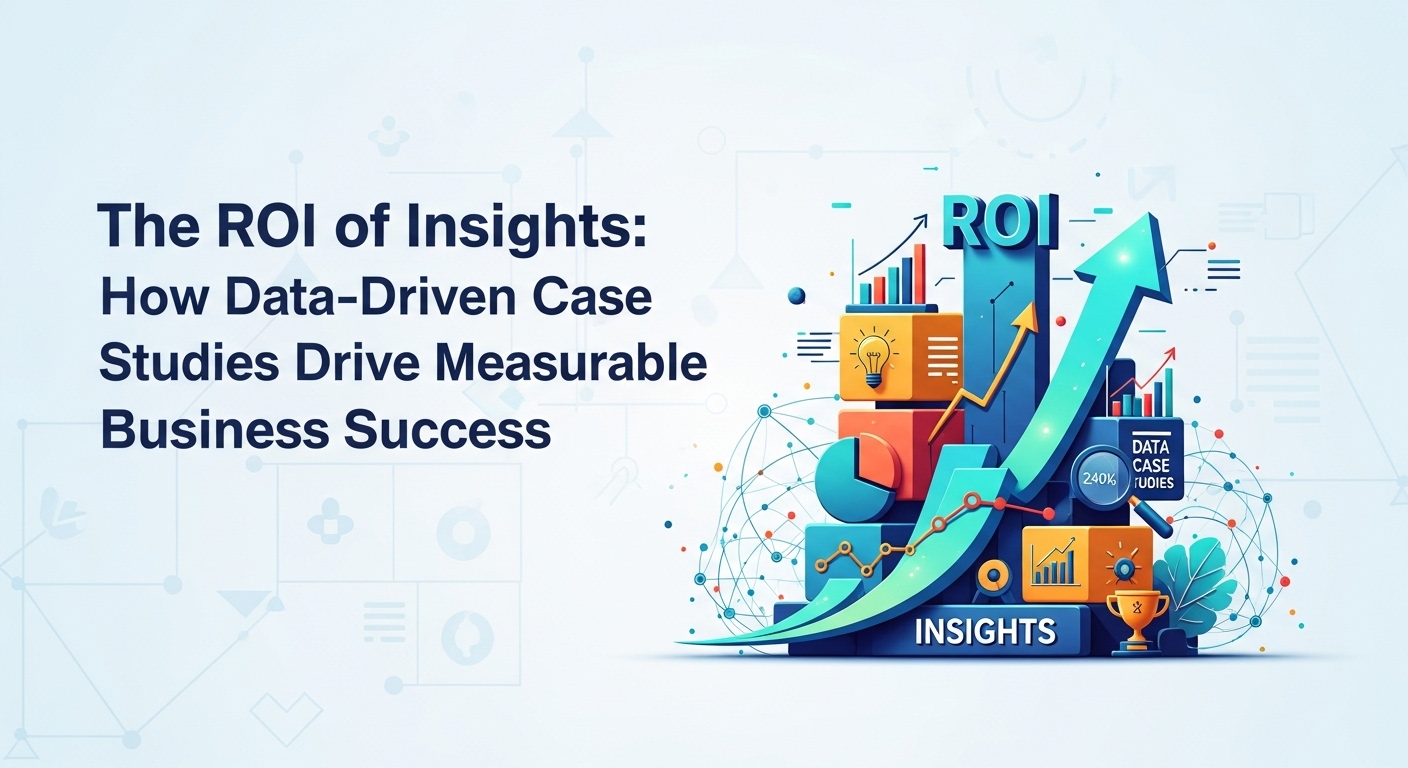Tired of the AI Buzz? Let’s Talk Real Results
Artificial Intelligence. It’s a term that dominates headlines, boardrooms, and marketing campaigns. We’re promised a future of unparalleled efficiency, groundbreaking innovation, and autonomous everything. But for many business leaders, the relentless hype can feel more like noise than a clear signal. How do you separate the futuristic promises from the practical, profit-driving applications available today? The answer lies in moving beyond theoretical discussions and diving deep into real-world evidence. This is where the power of detailed case studies & insights comes into play, offering a clear lens on how businesses are genuinely leveraging AI to achieve measurable success.
This article isn’t about abstract concepts or far-off possibilities. It’s a practical guide dedicated to showcasing tangible AI implementations across different industries. We will dissect specific challenges, explore the AI-powered solutions that were deployed, and, most importantly, quantify the real business impact. By examining these concrete examples, you’ll gain not just inspiration, but actionable insights you can apply to your own strategic planning. It’s time to cut through the noise and discover what AI is actually doing for businesses right now.
Case Study 1: Revolutionizing Customer Service with AI Chatbots
The customer service department is often the frontline of a business, yet it’s frequently bogged down by high volumes of repetitive inquiries. This was the exact scenario facing a mid-sized e-commerce retailer specializing in consumer electronics.
The Challenge: Overwhelmed Support Teams and Slow Response Times
The company was experiencing rapid growth, but its customer support infrastructure couldn’t keep up. The support team was inundated with common questions like “Where is my order?”, “How do I process a return?”, and “What is your warranty policy?”. This led to several critical problems:
- High Wait Times: Customers were waiting an average of 8-10 minutes to chat with a live agent.
- Low Agent Morale: Support agents were burnt out from answering the same questions repeatedly, preventing them from focusing on complex, high-value customer issues.
- Inconsistent Service: Quality of service varied depending on the agent’s workload and experience.
- 24/7 Unavailability: The support was limited to business hours, frustrating international customers and those shopping late at night.
The AI Solution: Implementing a Context-Aware Chatbot
Instead of simply hiring more agents, the company invested in an advanced, AI-powered chatbot integrated directly with their CRM and order management systems. This wasn’t a basic, keyword-based bot. It used Natural Language Processing (NLP) to understand the intent and sentiment behind customer queries. It could securely access order history, track shipments in real-time, and guide users through the company’s return portal. For complex issues it couldn’t solve, the chatbot would seamlessly escalate the conversation to a specialized human agent, providing the full chat transcript for context.
The Results: Measurable Improvements and Key Insights
The impact was both immediate and significant. Within six months of implementation, the company tracked the following results:
- 60% Reduction in Live Chat Inquiries: The chatbot successfully resolved over half of all incoming queries without human intervention.
- 90% Decrease in First-Response Time: Customers received instant answers to common questions, day or night.
- 15% Increase in Customer Satisfaction (CSAT) Score: Faster, more efficient service led to happier customers.
- Freed-Up Agent Capacity: Human agents could now focus on resolving complex technical problems and upselling opportunities, leading to a 5% increase in average order value from support-driven interactions.
The key insight here is that AI in customer service isn’t about replacing humans, but augmenting them. By automating the mundane, the business empowered its expert team to handle the work that truly requires a human touch, transforming the support center from a cost center into a value-generating asset.
Case Study 2: Predictive Analytics for Supply Chain Optimization
For a national food and beverage distributor, managing inventory is a delicate balancing act. Overstocking leads to waste and high storage costs, while understocking results in lost sales and frustrated clients. Their traditional forecasting methods, based on historical sales data, were failing to account for modern market volatility.
The Challenge: Inefficient Inventory Management and Forecasting Errors
The distributor’s forecasting model was simplistic, leading to a consistent 30% error rate. This inaccuracy caused a cascade of problems, including spoiled goods, expensive expedited shipping to cover shortfalls, and damaged relationships with retail partners. They lacked the ability to predict demand spikes caused by factors like local events, weather patterns, or social media trends.
The AI Solution: A Machine Learning Model for Demand Forecasting
The company partnered with data scientists to build a predictive analytics model. This machine learning model didn’t just look at past sales. It was fed a rich diet of diverse data sets:
- Real-time point-of-sale (POS) data from retail partners.
- Weather forecast data.
- Local event calendars.
- Social media sentiment analysis.
- Competitor pricing data.
The model used this data to identify complex patterns and correlations, generating highly accurate, granular demand forecasts for specific products in specific regions. The system learned and refined its predictions over time, becoming more accurate with each new data point.
The Results: Cost Savings and Enhanced Efficiency
The implementation of the AI forecasting model transformed their operations:
- Forecasting Accuracy Improved by 85%: The error rate dropped from 30% to less than 5%.
- 20% Reduction in Inventory Spoilage: More accurate ordering meant less waste, directly impacting the bottom line.
- 15% Decrease in Overall Logistics Costs: Optimized stock levels reduced the need for expensive last-minute shipping and excess warehouse space.
- Improved Partner Relationships: Retailers were delighted with the improved stock availability and reliability.
This case study provides a powerful insight: AI’s predictive power unlocks proactive, rather than reactive, business strategies. By anticipating future demand with a high degree of accuracy, the distributor could optimize its entire supply chain, turning a major operational weakness into a significant competitive advantage.
Case Study 3: AI-Powered Personalization in E-commerce Marketing
A fast-fashion online retailer was struggling to stand out in a crowded market. Their marketing efforts, including email campaigns and on-site promotions, were generic. They sent the same marketing messages to every customer, resulting in low engagement, poor conversion rates, and a high cart abandonment rate.
The Challenge: Generic Marketing and Low Conversion Rates
The core issue was a one-size-fits-all approach. A customer who exclusively bought men’s athletic wear would receive emails promoting women’s dresses. The website’s homepage showed the same featured products to every visitor, regardless of their browsing history. This lack of personalization made customers feel unseen and misunderstood, leading to a click-through rate of less than 1% on their email campaigns.
The AI Solution: Hyper-Personalized Product Recommendations
The retailer integrated an AI-powered personalization engine into their e-commerce platform and email marketing tool. This engine analyzed vast amounts of customer data in real-time, including:
- Past purchase history.
- Products viewed but not purchased.
- Items added to the cart.
- Time spent on specific product pages.
- Demographic information.
Using this data, the AI created a unique profile for each shopper and delivered a 1:1 personalized experience. The website’s homepage dynamically changed to feature products relevant to the individual. Product recommendation carousels suggested complementary items. Email campaigns were automatically populated with products the specific user had shown interest in, even including ‘back in stock’ alerts for previously viewed items.
The Results: Boosting Sales and Customer Loyalty
The shift from generic to personalized marketing yielded dramatic results:
- 300% Increase in Email Click-Through Rate: Emails filled with relevant products were far more engaging.
- 25% Increase in Average Order Value (AOV): Smart recommendations encouraged customers to add more items to their carts.
- 18% Rise in Overall Conversion Rate: A personalized shopping journey smoothly guided more visitors from browsing to buying.
The core insight from this case is that modern customers expect personalization. AI provides the tools to deliver this at scale, making each customer feel like the brand understands their unique tastes and needs. This builds not just sales, but long-term brand loyalty.
Conclusion: Your Next Steps in Leveraging AI for Real Impact
As these case studies & insights demonstrate, AI is not a magic wand. It’s a powerful tool that, when applied to a specific, well-defined business problem, can yield extraordinary results. The common thread across these success stories is a clear strategy: identify a pain point, gather the right data, and deploy a targeted AI solution to solve it. The impact is not theoretical; it’s measured in reduced costs, increased revenue, and happier customers.
Don’t get lost in the hype. Instead, look at your own business. Where are your biggest inefficiencies? What are your most significant growth opportunities? Start by asking how data and intelligent automation could address those specific challenges. Begin with a small, manageable pilot project to prove the concept and build momentum. The era of AI is here, and the businesses that succeed will be the ones that move beyond the buzz and focus on creating real, measurable value.


